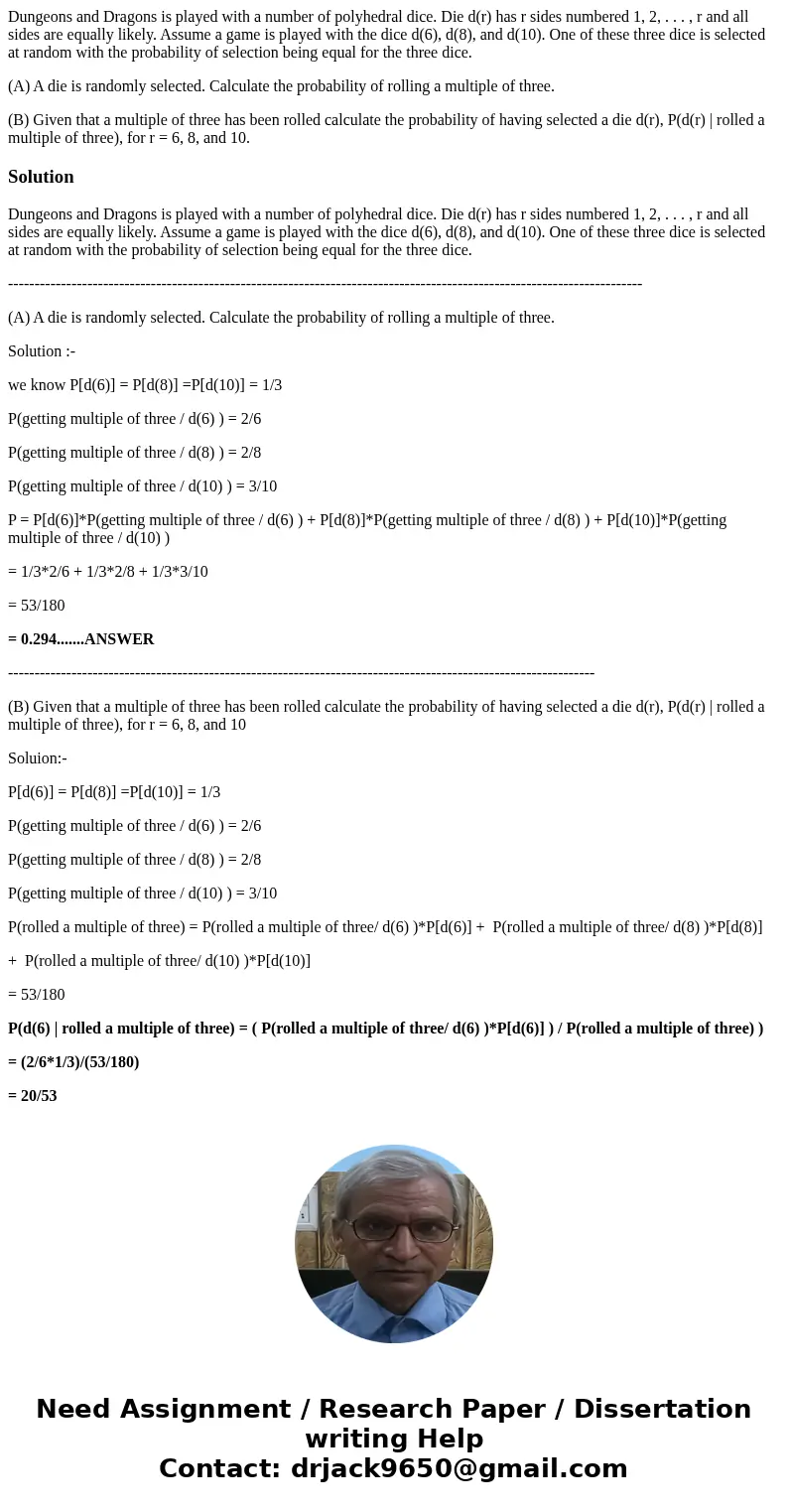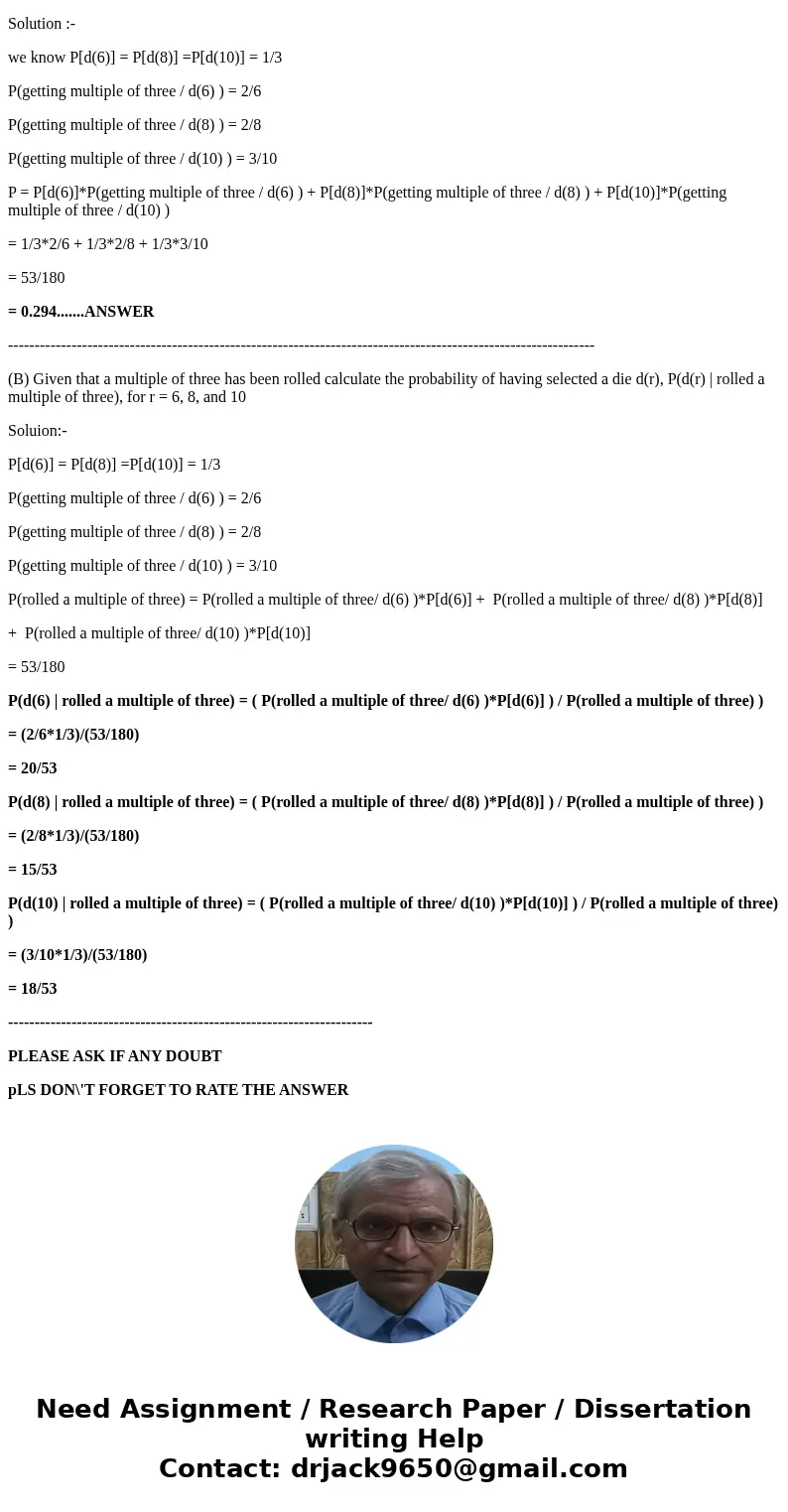Dungeons and Dragons is played with a number of polyhedral d
Dungeons and Dragons is played with a number of polyhedral dice. Die d(r) has r sides numbered 1, 2, . . . , r and all sides are equally likely. Assume a game is played with the dice d(6), d(8), and d(10). One of these three dice is selected at random with the probability of selection being equal for the three dice.
(A) A die is randomly selected. Calculate the probability of rolling a multiple of three.
(B) Given that a multiple of three has been rolled calculate the probability of having selected a die d(r), P(d(r) | rolled a multiple of three), for r = 6, 8, and 10.
Solution
Dungeons and Dragons is played with a number of polyhedral dice. Die d(r) has r sides numbered 1, 2, . . . , r and all sides are equally likely. Assume a game is played with the dice d(6), d(8), and d(10). One of these three dice is selected at random with the probability of selection being equal for the three dice.
------------------------------------------------------------------------------------------------------------------------
(A) A die is randomly selected. Calculate the probability of rolling a multiple of three.
Solution :-
we know P[d(6)] = P[d(8)] =P[d(10)] = 1/3
P(getting multiple of three / d(6) ) = 2/6
P(getting multiple of three / d(8) ) = 2/8
P(getting multiple of three / d(10) ) = 3/10
P = P[d(6)]*P(getting multiple of three / d(6) ) + P[d(8)]*P(getting multiple of three / d(8) ) + P[d(10)]*P(getting multiple of three / d(10) )
= 1/3*2/6 + 1/3*2/8 + 1/3*3/10
= 53/180
= 0.294.......ANSWER
---------------------------------------------------------------------------------------------------------------
(B) Given that a multiple of three has been rolled calculate the probability of having selected a die d(r), P(d(r) | rolled a multiple of three), for r = 6, 8, and 10
Soluion:-
P[d(6)] = P[d(8)] =P[d(10)] = 1/3
P(getting multiple of three / d(6) ) = 2/6
P(getting multiple of three / d(8) ) = 2/8
P(getting multiple of three / d(10) ) = 3/10
P(rolled a multiple of three) = P(rolled a multiple of three/ d(6) )*P[d(6)] + P(rolled a multiple of three/ d(8) )*P[d(8)]
+ P(rolled a multiple of three/ d(10) )*P[d(10)]
= 53/180
P(d(6) | rolled a multiple of three) = ( P(rolled a multiple of three/ d(6) )*P[d(6)] ) / P(rolled a multiple of three) )
= (2/6*1/3)/(53/180)
= 20/53
P(d(8) | rolled a multiple of three) = ( P(rolled a multiple of three/ d(8) )*P[d(8)] ) / P(rolled a multiple of three) )
= (2/8*1/3)/(53/180)
= 15/53
P(d(10) | rolled a multiple of three) = ( P(rolled a multiple of three/ d(10) )*P[d(10)] ) / P(rolled a multiple of three) )
= (3/10*1/3)/(53/180)
= 18/53
---------------------------------------------------------------------
PLEASE ASK IF ANY DOUBT
pLS DON\'T FORGET TO RATE THE ANSWER


 Homework Sourse
Homework Sourse